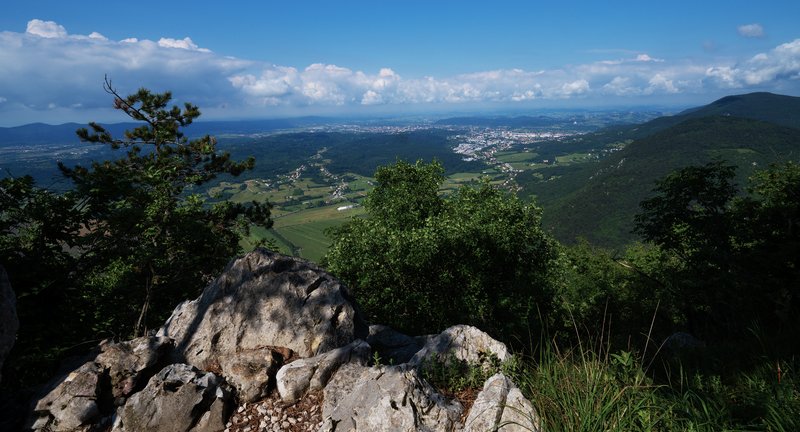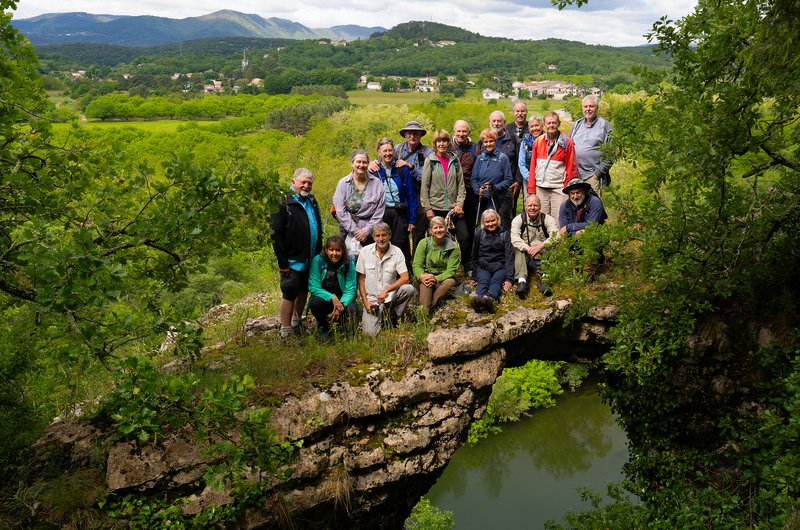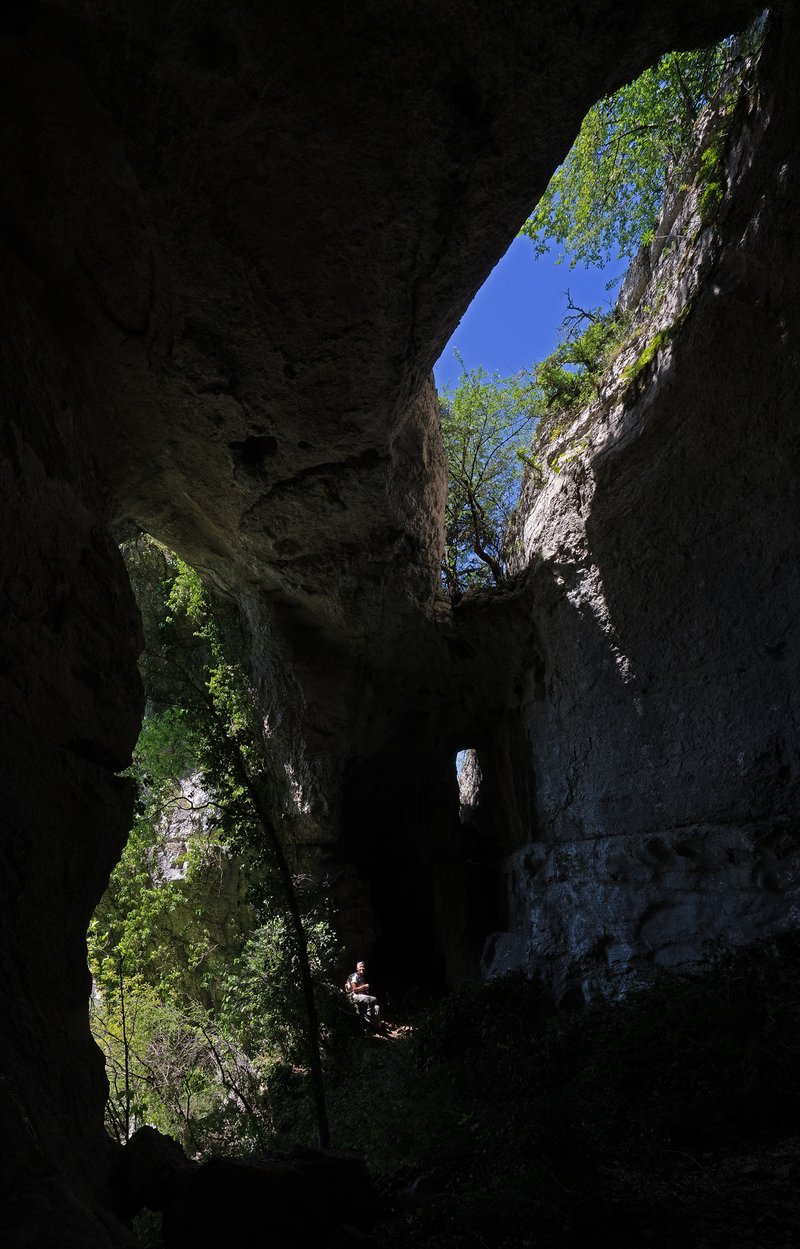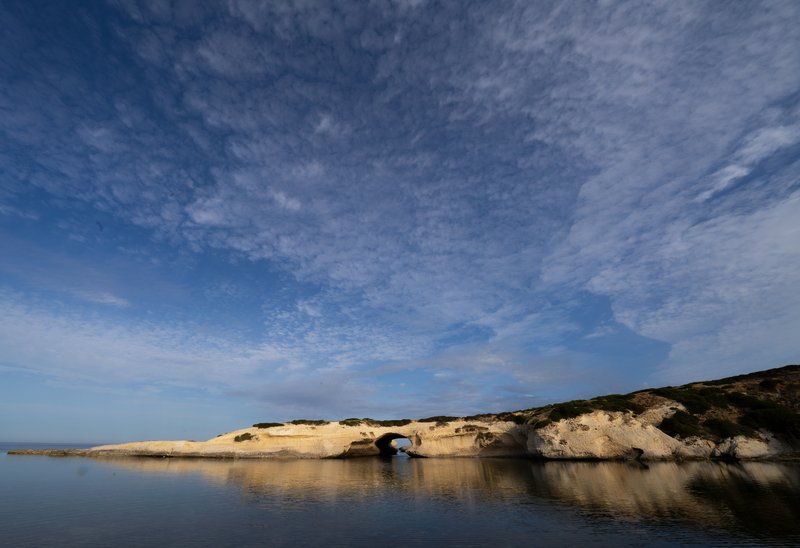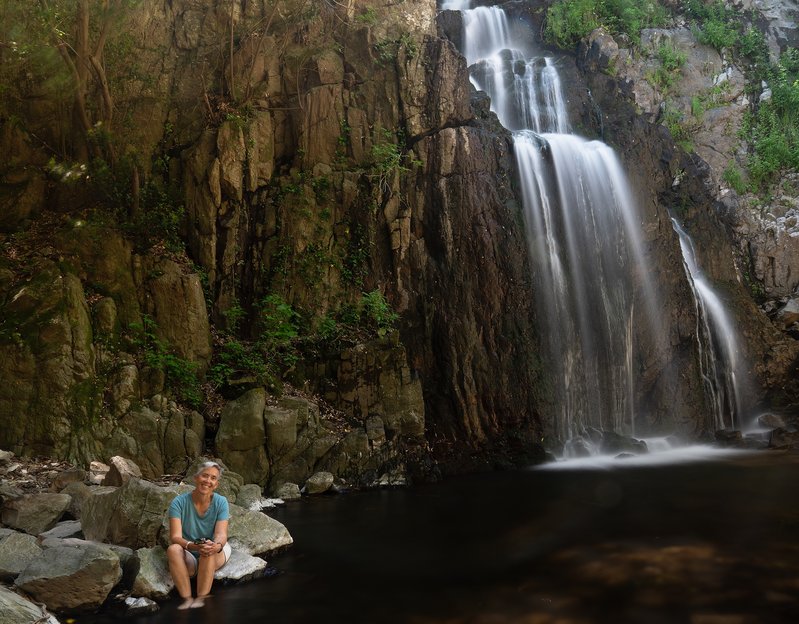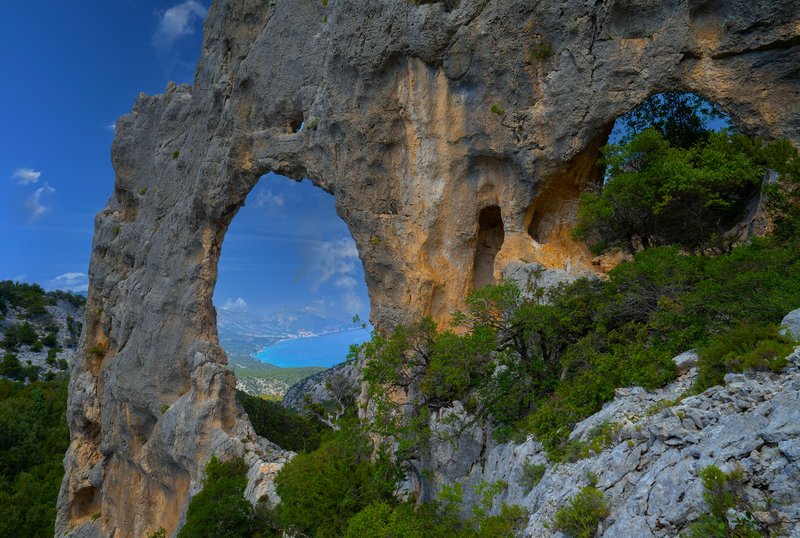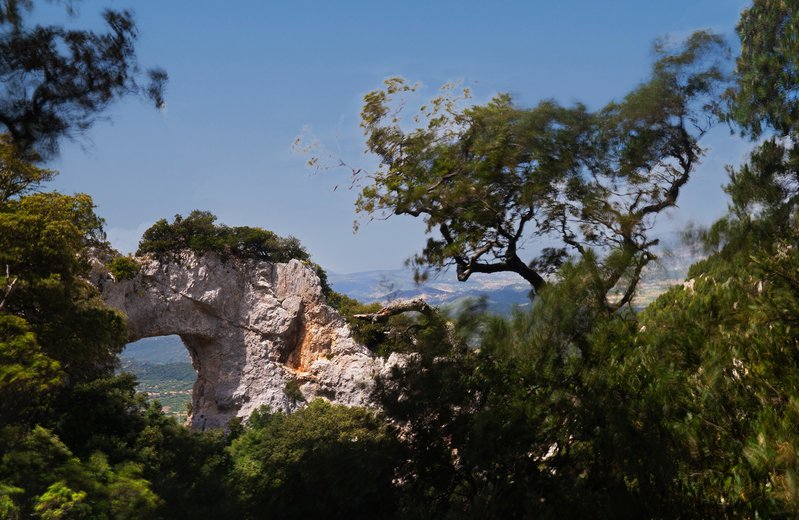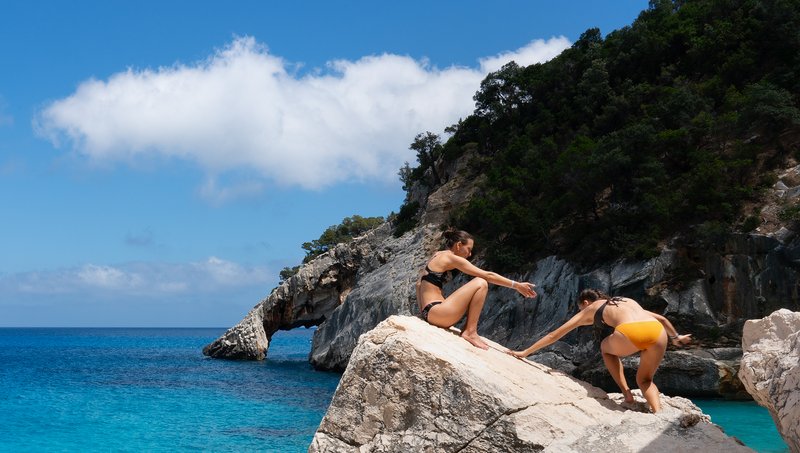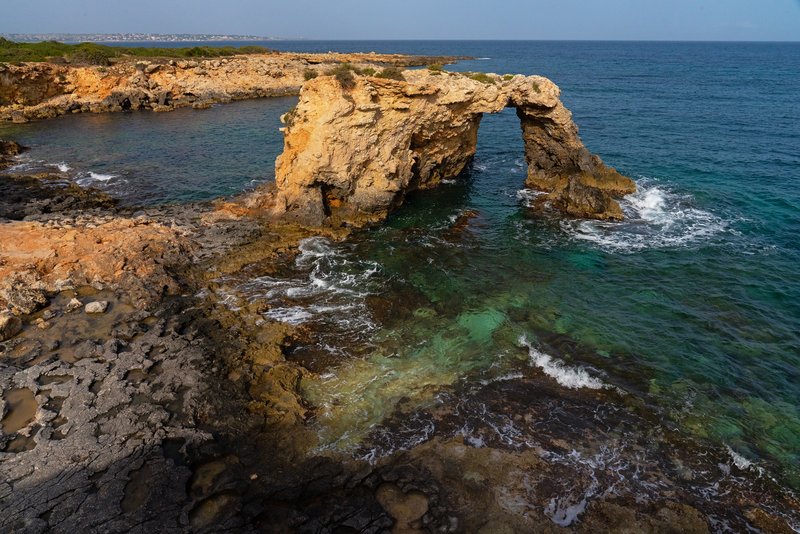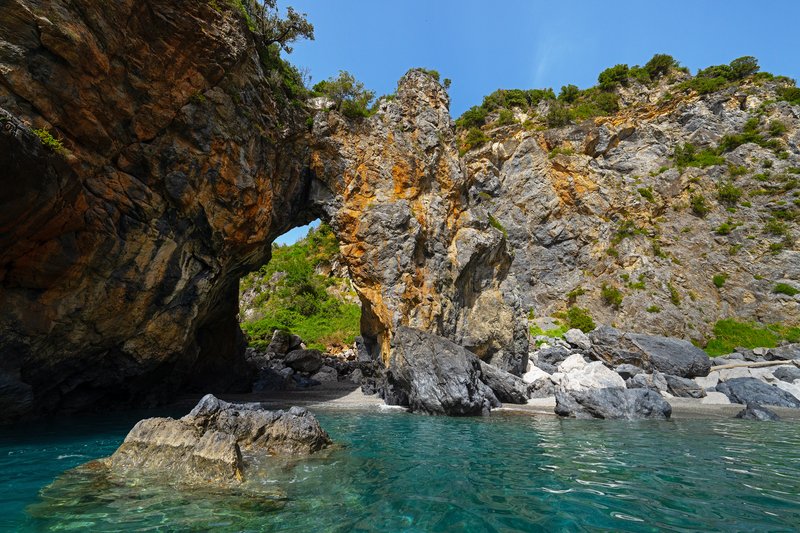Short Stories from Europe
Cynny in Baume Escure (FR-117, 31T-596216-4917787, 33'x6.6')
Each morning in the parking lot of the Rives d’Arc Campground, where each couple had reserved a cabana, we gathered for our morning briefing from Guilain, translated into English by Cynny. We visited about 45 arches during the nine days of hiking. Most members hiked every day, but some also scheduled alternate activities in the area. Guilain led the hikes, and I was the designated sweeper, bringing up the rear to make sure we all stayed together. Cynny and I hiked with the group for all but the last day when we had to leave early to catch a car ferry from Toulon to Porto Torres, Sardinia to begin our road trip.
After the rally, we were on the road for most of six weeks, moving every couple of days, rain or shine. Only a few locations could be planned to coincide with beautiful light and even fewer allowed many compositional choices. This was a trip that had been cancelled in 2020 and again in 2021 due to Covid and delayed again for other reasons, so we were excited to finally be on our way. “Short Stories from Europe” is not a traditional gallery filled with standalone photographs and short captions. It is a collection of travelogues, each accompanied by a photograph. To best appreciate them, you’ll have to read the text. I know that’s a dated concept and an additional demand on your time, but I live slowly these days and find it to be rewarding.
From Sardinia we went to Sicily and then to the mainland. Then, on to Croatia and Slovenia before returning to the south of France via Italy, returning our well-worn rental car, taking the train to Paris and returning to the U.S. Everything along our route was new to me. Cynny had vague recollections of a few places from a childhood drive through Yugoslavia on the way to Turkey when her father was there as a Fulbright Scholar.
When you rent a car in Europe, be aware that there are different classes of cars and that only certain classes are allowed to enter certain countries. We rented from SIXT, a European company that understands the system and we had no trouble at all. Also, be aware that in some countries, such as Slovenia, you need a Vignette to drive on the highways. I am still not sure what a Vignette is, but I bought one online and then didn’t worry about it again. We rented a four-door hybrid Fiat 500C and it was perfect – large enough for comfort and small enough to navigate the narrow roads that were common throughout our travels. Also, having a hybrid when gas costs €8/gallon is helpful. It also worked well with our navigation devices, a Garmin (named Georgette) that I had preprogrammed with every location, and Google maps. Also, be aware that most of the major roads are toll roads and that there are a variety of different types of toll plazas. At some, you’ll pick up a ticket, at others you’ll have to pay cash, some lanes allow the use of credit cards and all plazas have lanes only for vehicles with passes that you will not have. Also, American Express is not really a thing in Europe and certainly not at toll booths, so have a Visa or Mastercard with you if you expect to charge almost anything.
You’ll also have to quickly learn best roundabout practices. Some roundabouts have two lanes. I’m still trying to figure those out. Why would you ever be in the inside lane? You have to exit somewhere. Passing is another mystery. Almost everyone drives a small car by American standards – small enough that most major two-lane roads are wide enough to accommodate three car widths, so other cars will pass you essentially in your lane. Motorcycles are abundant and no logical rules of the road seem to apply to them.
With input from European NABS members Ray Millar, Guilain and Dr. Vlastimil Pilous, I put together an itinerary that included about 30 arches, a dozen waterfalls, a half a dozen lighthouses, five national parks and some other spectacular scenery. Even with good weather, good health and Cynny’s French and Italian language skills I thought we’d be lucky to see half of them. With a lot of hard work, we saw most of the arches, some of the waterfalls and one of the lighthouses. Throughout rural Europe, you are not going to always find people who speak English, so be prepared. If Cynny is not with you, download Google translate. I had both and life was good. We sometimes got misplaced, but never totally lost (at least for very long).
At this point, I should explain about natural arches. I am the editor of SPAN, the quarterly publication of the Natural Arch and Bridge Society, so that is currently the focus of my work. I also prefer to hike to something. I like the sense of accomplishment. Sometimes it’s to hoodoos, sometimes it’s to a waterfall and often it’s to a natural arch. From a visual perspective, I find arches the most interesting because they have an opening, so you see both the arch and something through the arch. It provides for layering and depth and I find that those things make a photograph more interesting and more challenging both to the photographer and to the viewer. Of course, all of that is meaningless without the right light. There was a time when I would pitch my tent and not leave until that moment arrived, but those days are long gone. I do miss them but am grateful for what I can still do at age 70, living with a few chronic ailments and a severe loss of hearing.
